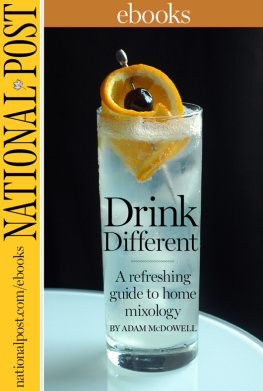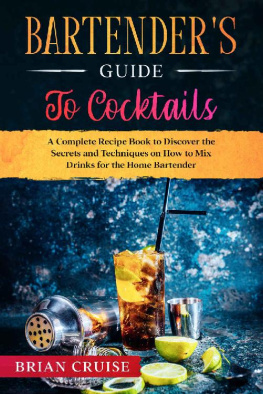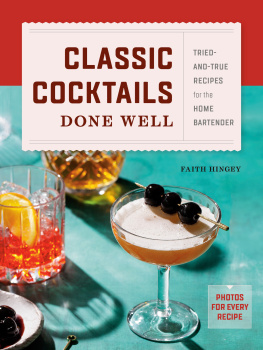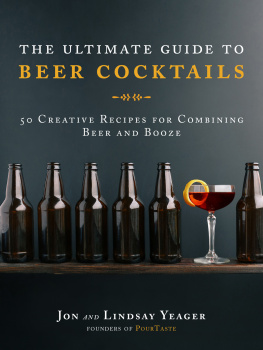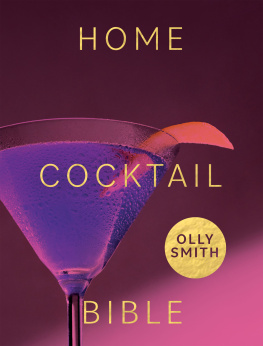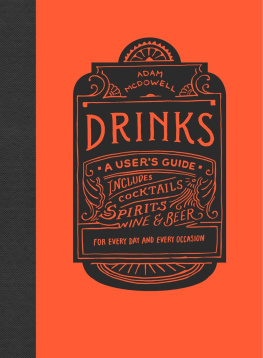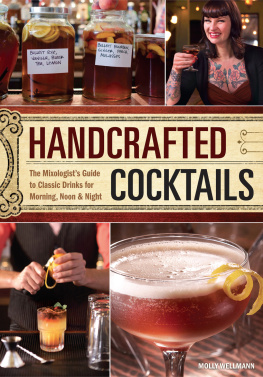
Table of Contents
PART ONE:
BOOZE BASICS

Photo: Adam McDowell
Bums wiggle to the jazz. Partiers flirt and play piggyback. Holly Golightlys crowded apartment fills with chatter and laughter and cigarette smoke.
Was the 20th-century cocktail party really as wild and glamorous as the 1961 film Breakfast at Tiffanyswould have us believe? Can we still have that much fun?
We may well find out. The cocktail hour is on the upswing again. The Obama administration revived White House cocktail parties, which had waned since the Kennedy years. Closer to home, many couples are scaling down their weddings from formal banquets to more casual stand-and-mingle affairs, and anecdotal evidence suggests that the cocktail hour is slowly returning to Canadian homes.
This boozy new world is full of strange and unfamiliar names and flavours for many of us. Too many Canadians stick to a bland, repetitive liquid diet of lagers, coolers, vodka and wine (at least in the last case were gradually learning how to explore). We are mired in this rut because we are afraid of what else is out therestung, in many cases, by all-too-vivid memories of the havoc certain spirits wrought on our young palates. Once burned by tequila during frosh week, twice shy.
The universe of cocktails can be daunting at first, understandably, but its surprisingly welcoming once you give it a shake. This ebook is built around my past Happy Hour columns in the National Post, which for several years have run in the Weekend Post section on Saturdays. I hope they have encouraged people to drink different(ly)to drink for the sake of flavour rather than intoxication; to try new things and explore the less-familiar avenues of the liquor store; to try for themselves the joy of combining different liquids into a whole that exceeds the sum of its parts.
A wave of creative mixology has flourished in bars and restaurants over the past several years, but the best way to build ones cocktail know-how is to make the classics at home. This ebook tells you how to faithfully reproduce the old standards, from fun refreshers like the Singapore sling to the serious business of Sazeracs.
In we go over some of the basic stuff that youll need to know in order to get started. Most cocktail-making involves a surprisingly small number of ingredients, tools and techniques; we re-combine them in endless permutations to make thousands of different drinks. Once you understand this, cocktails are much less intimidating.
In introduces you to a few secret weaponsingredients that you can add kick and sophistication to your home bars repertoire, leaving your guests wondering just what is in this drink that makes it so damn tasty.
But before we get to that point, we might wonder why should we go to the fuss of relatively complicated mixed drinks in the first place.
First, because cocktails are delicious. And you probably didnt get a proper try the first time around. Without going into a long discourse on the Dark Age of the Cocktail (circa 1970 to 2000), and the resurrection were living through now, its enough to say that mixology was dead but has risen and walks among us again. Its quite possible many readers have experienced a correctly made cocktail, since almost no one remembered how to do it before a few years ago. Then bartenders and booze geeks made a trend of blowing the dust off old cocktail books, and discovered techniques and recipes from the two-century-deep history of mixed drinks that ought never to have been abandoned.
What does a proper cocktail taste like? Like layers of flavour working in harmony; the power of alcohol folded into a civilizing envelope of sourness, bitterness and sweetness. Toronto food writer James Chatto once observed that a living (that is, good) cocktail is full of motion as its flavours unfold on the palate, which is a vivid and astute description, I dare say, of the tried-and-true drinks in this book.
The second reason we should make cocktails is that they are interesting in their own right. Mixed drinks cheat the limits of time and space. Cocktails bring the planet together into a single sip, even if we seldom think of it that way. A Manhattan is a cosmopolitan creation that combines rye from North America, vermouth from Italy and bitters from Trinidad. Thats just one example.
And they are a connection to our past. Twentieth-century U.S. history in particular is sodden with spirits, bitters and vermouth, and its gratifying on an almost spiritual level to know that you are drinking something that, say, Dorothy Parker would have recognized (or ordered).
Third, making cocktails is fun. It impresses the hell out of party guests and I find that fixing one on an ordinary night makes a mirthful alternative to dessert. Making your own cocktails is even more rewarding if you supplement the exercise with online bragging. Its as easy as baking, and little kids and dotty grandmas do that.
So what are you afraid of? Cocktails are history in a glass and fuel for conversation. Their appeal ranges from to the geeky arcana of historical accuracy to simply drinking a particular thing because its fashionable. Whatever your motivations, I hope this guide will help you revive the great classic cocktails in your own home. As a happy side effect, it just might help put some jiggle in your junk.
Adam McDowell
For those on the fence, I want to respond to some commonly heard doubts about home bartending in the hope of persuading you to pick up the glass and spoon.
Id rather not stock obscure ingredients.
Youll find you can go a surprisingly long way with a few basics. See the next chapter,
I lack the tools.
Theyre not hard to find. Head to a good kitchen store, or an online cocktail supply shop like chapter for a short list of common bartending tools. You can make plenty of drinks without special tools anywayclassics including the Negroni, Singapore sling, B&B and Tom Collins can all be prepared in the glass you serve them in. And all you really need to make many old-school stirred cocktails like the martini and Manhattan are a pint glass to stir it in, some kind of stirring implement (a chopstick will do fine) and something to use as a strainer when you pour it into the glass, to keep the ice out of your drink.
Im afraid I might make a cocktail and not like it.
Whats your dealbreaker: the evergreen juniper aroma of gin? The chocolate-pepper-cucumber smell of tequila? Are you sure you still cant stomach it? If your palate has matured since you were 20and thats likelyyou might actually enjoy spirits and flavours that used to make you gag. Try again. Tell yourself all the same things youd say to an eight-year-old who refuses to taste something new. And treat yourself to a quality brand this time. Maybe you would have liked tequila all along if youd had the opportunity to try a nice one, but youve only had the bottom-tier gut-rot.
Next page
